22 July 2015, Performance Space, Carriageworks, Eveleigh (Sydney)
The printed program for Sue Healey’s latest work, On View. Live Portraits, contains a short essay by Christopher Chapman, senior curator at the National Portrait Gallery in Canberra. Writing of screen-based digital portraits, or video portraits, he says: like any portrait, the genre should succeed when it communicates a compelling sense of person-hood, or identity, or individual being. This is exactly what Healey’s work does, even though it is so much more than an exercise in digital or video portraiture. It communicates a strong sense that we are watching the very separate identities of five extraordinary individuals—Martin del Amo, Shona Erskine, Benjamin Hancock, Raghav Handa and Nalina Wait.
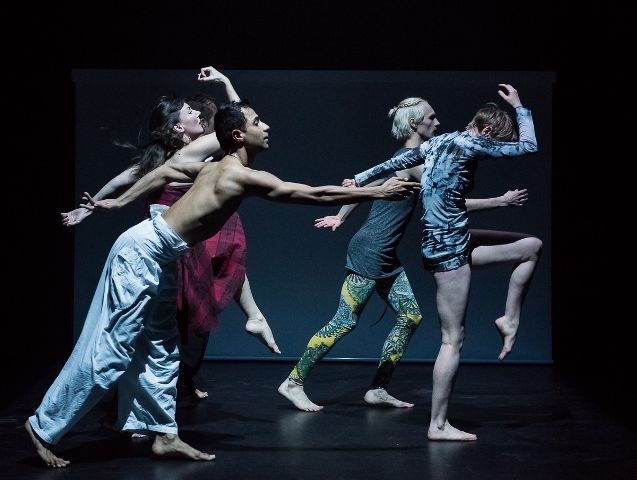
On entering the darkened Bay 20 of Carriageworks, the venue for On View, it took several seconds for our eyes to adjust. But when they did we were confronted by those five individuals scattered, seemingly randomly, in one half of the cavernous space. The performers were all moving, if sometimes just slightly, and were involved in some way with a moving image as background or projection. But in essence they represented an image that, although clearly live, we could interpret as a portrait in a relatively traditional sense.
The movements were interesting enough, but it was only later that their significance emerged. In this opening segment, Shona Erskine, for example, sat quietly in a corner twitching slightly on occasions and adjusting a red item of clothing that partly covered the upper section of her body. A fox fur, complete with head, tail, and feet, was spread on the floor beside her and, with the moody lighting in which she was shrouded, the image had the quality of a Baroque portrait. Later, Erskine danced a solo with the fox fur, wrapping it around her, wearing its head on her head, and otherwise utilising it as an addition to her solo. That initial portrait had come to life and the slight twitches we noticed earlier had turned into more obvious fox-like movements.
After a few minutes spent absorbing this introduction, we were ushered to the other end of the bay and invited to sit down. Five screens confronted us now and each had three digital portraits of the five dancers, with one screen for each performer. Slowly the portraits began to move and it was quite a remarkable experience to watch how costume affected the dancerly image. Raghav Handa, for example, wore three different costumes in his three portraits—white, loose, Indian-style trousers (no top) in one, a casually elegant shirt and trousers in another, and a suit in the last. He executed the same, quite simple bending movement in each of his three on screen portraits, but it looked quite different in each case. I found myself unable to do anything but favour the movement when Handa was wearing his Indian outfit. It was his dance costume, which I knew, and the power of that knowledge coloured my perception.
As the piece progressed the dancers appeared live, dancing around the screens as well as appearing on them. The interaction between film footage and live performance grew stronger.

Particularly affecting were a series of solos where the dancers seemed to take on the attributes of a creature from the natural world. Handa was seen on screen handling a horse as if breaking it in, while at the same time he performed live with the fluid quality that marks his dancing, and with something of the freedom and wild abandon of the horse. An extraordinary performance by Benjamin Hancock was the highlight of this section. His acrobatic style of movement, punctured by a vocabulary that often looked quite balletic, along with the film footage on the screens of a praying mantis, was mesmerising.
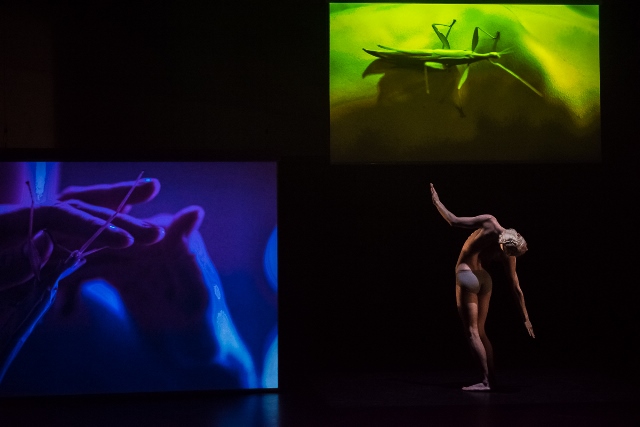
Later, Martin del Amo was seen in a cemetery moving solemnly. A stone bird perched on one of the headstones seemed to loom over him.
There were segments when the dancers performed together, or when they came forward and stared at the audience. The gaze of Nalina Wait was especially powerful and, in one filmed section, her expressions told an entire story. Her dancing was incredibly lyrical and an absolute joy to watch, especially her solo where she appropriated the fluidity of a fish, which we saw on screen as Wait performed on stage. And there were some exceptional moments when she danced with Handa and del Amo, who adjusted her long hair and circular skirt, manipulating the image we received.
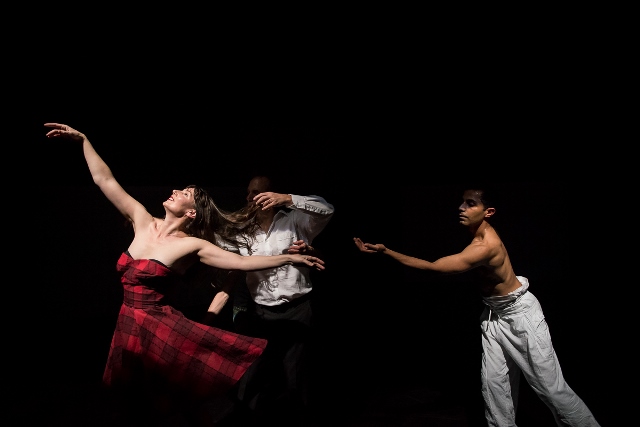
On View. Live Portraits had so many layers of meaning at every turn. It was absolutely exhilarating to watch and is a major work that deserves wide exposure. While Healey as choreographer and film maker, and her director of photography, Judd Overton, have worked strongly together before, with On View they have taken their collaboration to new heights. The links between live performance and the high quality moving image material, rather than being frustrating as they sometimes are when dance and film aim to coexist, were absolutely fluid and illuminating of each other. The show was enhanced by lighting from Karen Norris and an original sound score from Darrin Verhagen and Justin Ashworth. Definitely a five star experience, which can be savoured post show by some wonderful photographic images by Gregory Lorenzutti.
Michelle Potter, 23 July 2015
Featured image: Martin del Amo in On View. Live Portraits, 2015. Photo: © Gregory Lorenzutti
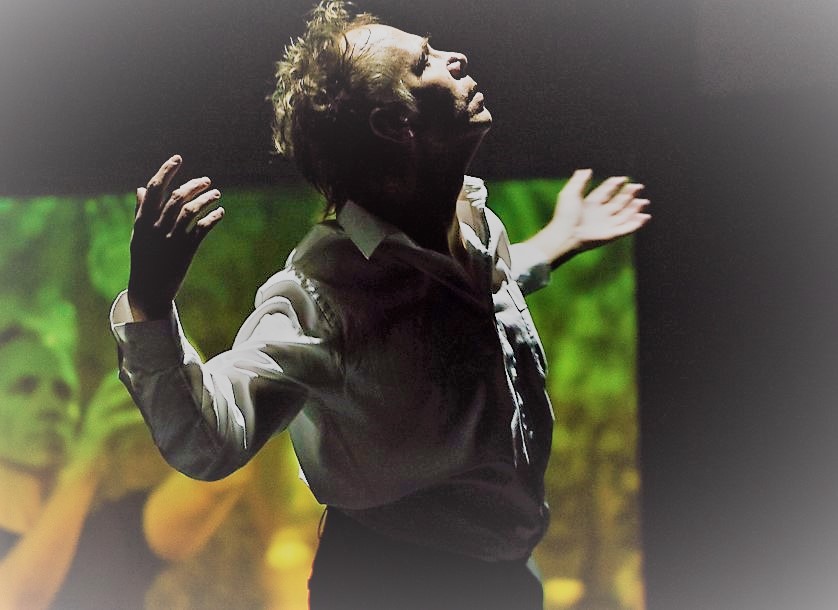
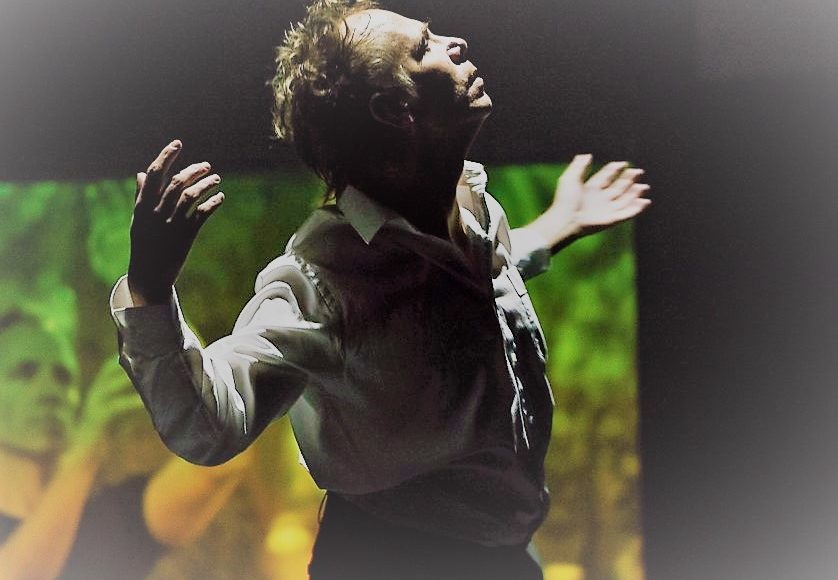
One thought on “On View. Live Portraits. Sue Healey”